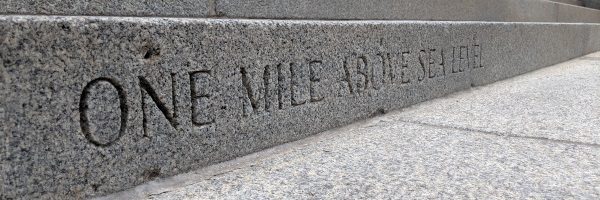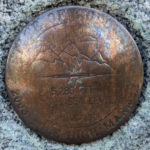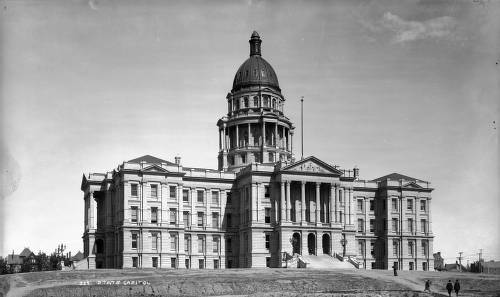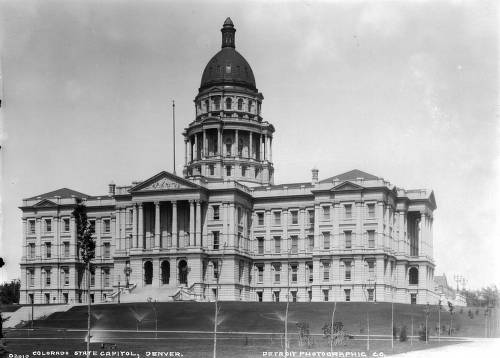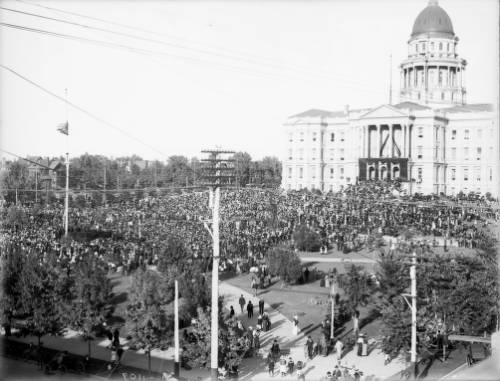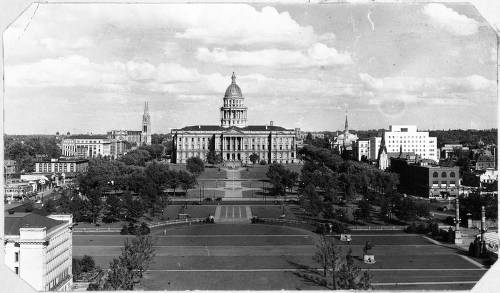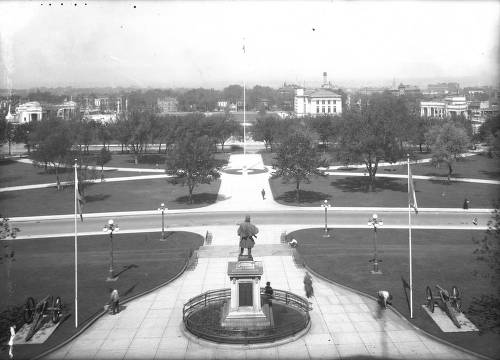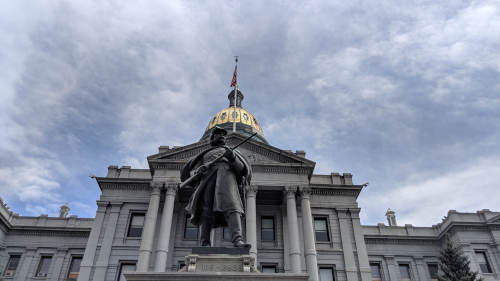
A snapshot of history
Explore the Historical Landmarks of Denver’s State Capitol
Denver, the vibrant capital of Colorado, is home to the state’s Capitol building, which proudly sits on the east side of Civic Center Park, between W Colfax Ave and W 14th Ave. Known for its unique claim to fame, the building marks “One Mile Above Sea Level,” famously inscribed on the 15th step at the west side entrance, overlooking the park.
While the original measurement was based on 1900 techniques and later found to be slightly off, a dedicated marker on the 13th step, installed in 2003, now signifies the accurate mile-high elevation. Construction of this iconic structure began in the 1890s, and it officially opened in November 1894.
The Capitol’s distinctive gold dome, initially made of copper, was embellished with 200 ounces of genuine gold leaf in 1908, commemorating the Colorado Gold Rush. Over the years, the dome received four more applications of gold leaf, with the most recent in 2013, using 65 ounces of pure gold mined within Colorado, valued at $125,000 at the time.
The Capitol’s exterior is crafted from Colorado white granite, hailing from the Aberdeen Quarry near Gunnison, Colorado, while the interior boasts rare Colorado Rose Onyx marble from a quarry near Beulah, southwest of Pueblo. In fact, it’s said that the entire supply from the quarry was consumed during construction. The floors are made of White Yule Marble from a quarry near Marble, Colorado, also used for the “Tomb of the Unknowns” and parts of the “Lincoln Memorial” in Washington, D.C.
A poignant moment in history occurred in September 1901 when flags flew at half-staff to honor President William McKinley, who was assassinated. The Capitol, its front adorned with flags and curtains, became a memorial site for the beloved president.
An old photograph from the 1930s or 40s captures the Capitol building across Civic Center Park from the City and County building. To the left, you can spot the original Carnegie Library, now known as the McNichols Civic Center Building, both of which are excellent stops on your Denver tour.
Near the west side entrance steps, the Civil War Monument stood proudly, dedicated on July 24th, 1909. It featured a statue of a Union soldier, paying homage to all Colorado soldiers who fought in the Civil War, nearly half a century after the war’s onset. This monument went by various names, including Civil War Memorial, Soldier’s Monument, and Civil War Soldier.
In 2020, during the protests against racial injustice, the statue was toppled as it was seen as a symbol of the military’s role in the Sand Creek Massacre. Plans are underway to replace it with a sculpture of a Native American woman mourning the atrocities of the Sand Creek Massacre, with consideration for relocating the Civil War Soldier to nearby Lincoln Park, which already hosts a veterans’ memorial.
Don’t miss the opportunity to tour the Capitol building for free, highly recommended to history enthusiasts. Historical Tours are available Monday through Friday, excluding holidays.
For more information click here.
Thanks for wandering with us,
The Wandering Couchs

